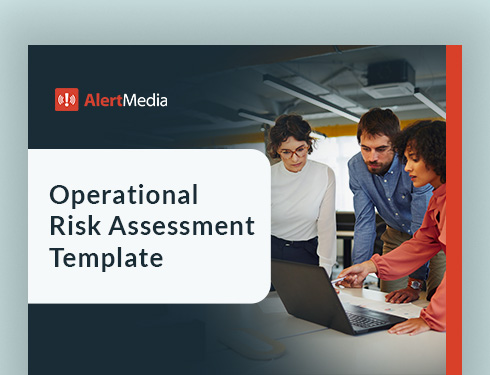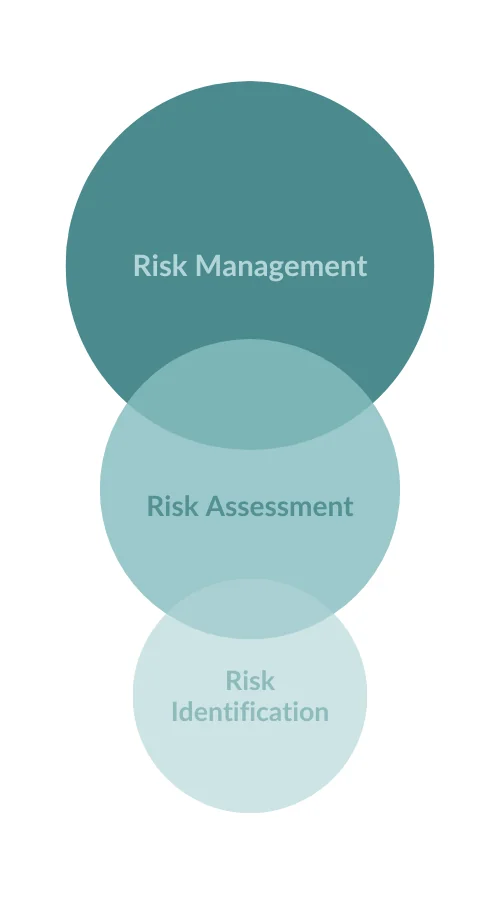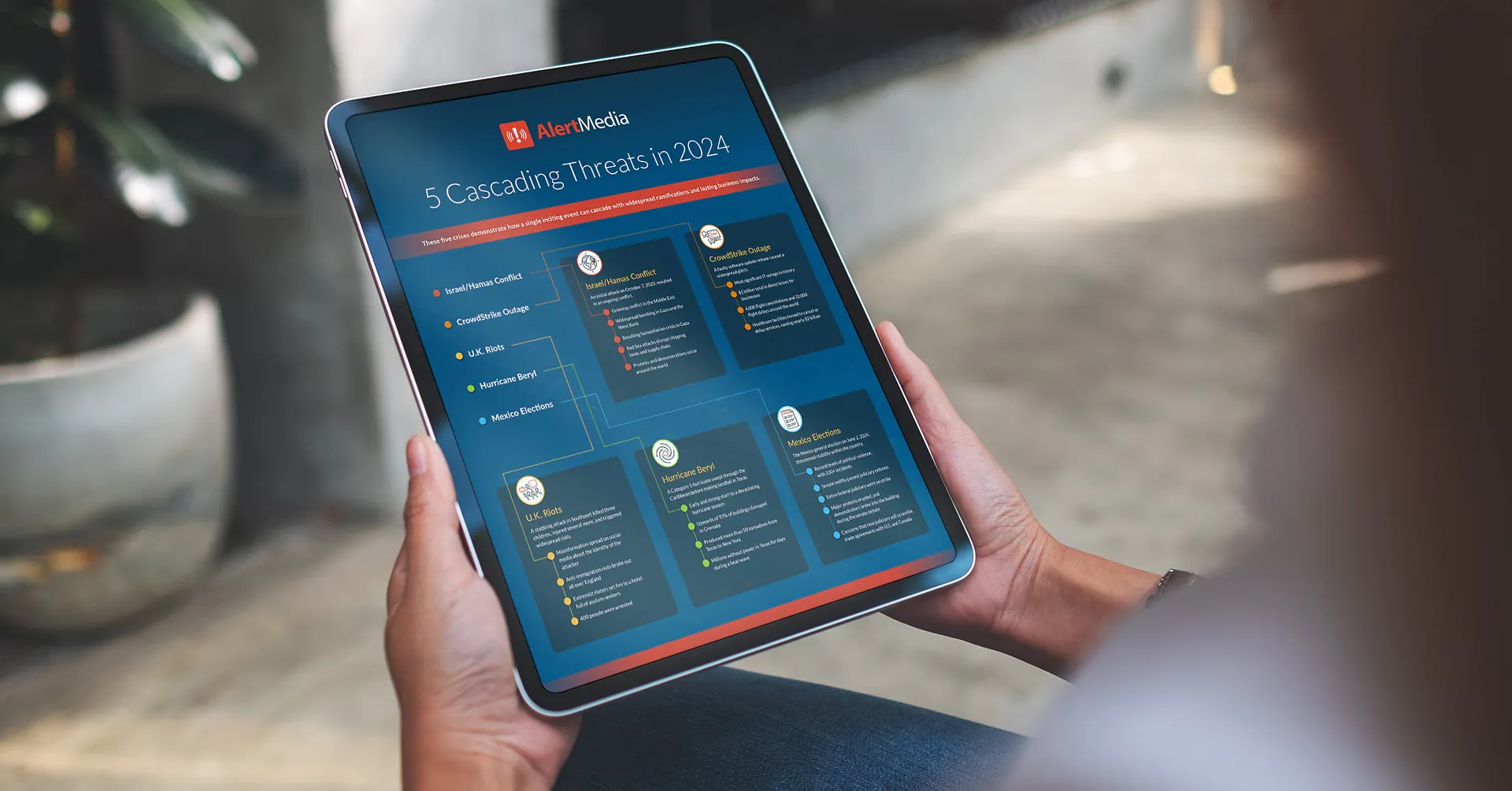
8 Risk Identification Strategies to Protect Your Business From Harm
You can’t mitigate a risk you don’t know about. Here are eight ways to identify your organization’s potential risks so you can better prepare to manage them.

If you don’t know what could go wrong, you cannot prevent a potential emergency. In today’s complicated threat landscape, organizations in every industry face a wide variety of potential threats, from severe weather to cyberattacks to active shooter events. These risks all have the potential to cause harm, such as disrupting operations, damaging reputations, and impacting financial stability.
Identifying these risks early and accurately is critical to implementing risk management strategies to protect your business. But coming up with a list of potential risks to your organization can be intimidating, especially when the stakes are high.
This post explores eight risk identification strategies that can help you stay ahead of potential threats. It also offers resources for how to proceed so you can ensure your business is aware and well-prepared for whatever comes your way.
What Is Risk Identification?
Risk identification is the process of detecting, projecting, and documenting potential threats that could result in harm to your people or facilities or a disruption of your business operations. It is a part of the larger process of risk assessment under the umbrella of risk management. The primary goal of risk identification is to help anticipate issues before they occur in order for your team to establish risk mitigation strategies to limit and prevent negative impacts.
Operational Risk Assessment Template
What Makes Risk Identification So Important?
Risk identification is the foundation of effective risk management. After all, in order to prevent, prepare for, and respond to a risk, you need to know what exactly what it is and how it might impact your business. This is why Scott Davidson, CEO and Founder of Code 4—an operations management and emergency services provider based in Austin, Texas—prioritizes risk identification in his mitigation efforts. Risk awareness is a key part of how he ensures safety and security during mass events.
“Even the most thoughtfully planned, well-funded, and longstanding events have a scarcity of resources. We’re limited in bandwidth, time, and, more than ever, the personnel available to mitigate these risks. It means that our job is to really triage and to be futurists, tasked with predicting the future based on our expertise, our experience, and the patterns and trends that we’re observing,” Scott explains on The Employee Safety Podcast. “We have to identify what risks are worthy and meaningful to mitigate against and knowingly leave some unmitigated. And that’s, as you can imagine, quite a challenge.”
The core benefit of comprehensive risk identification is that it sets the stage for all subsequent risk management work, ensuring that you are aware of potential threats before they can cause significant harm. With an accurate list of risks, you’ll be able to make better decisions, optimize your resource allocation, and overall create a more resilient organization.
8 Strategies for More Comprehensive Risk Identification
Identifying all potential risks can be a challenge for any business. No matter how large or small your organization is, you will need to account for a wide variety of internal factors and monitor ongoing events in the world to account for external threats. General brainstorming and using risk analysis frameworks such as a SWOT analysis or a root cause analysis can be incredibly helpful.
But identifying all risk factors can be hard on your own. Here are eight risk identification methods to make sure you have all your bases covered and can identify the most likely and important risks to your organization:
1. Review past risk incidents
Examining past risk events can provide valuable insights into potential future risks. By analyzing previous risk identification examples, both within your company and across the industry, you can assess patterns and trends that may indicate vulnerabilities or new risks. Documenting these incidents and their impacts can help in recognizing similar threats in the future and developing preventative measures.
2. Interview industry experts
Engaging with industry experts can provide an external perspective on potential risks. These experts bring a wealth of knowledge and experience, offering insights that may not be apparent within your organization. Regular consultations with consultants, analysts, and other professionals can keep your risk management strategy current with the latest industry developments.
3. Meet with company stakeholders
Stakeholders, including senior management, board members, and key department heads, deeply understand the company’s operations and strategic goals. Their input is crucial in identifying risks that could impact the organization’s mission and objectives. Regular meetings with stakeholders ensure that risk identification and analysis are aligned with the company’s priorities and business environment.
4. Consult with diverse department heads
Different departments within your organization face unique challenges and risks. Brainstorming with department heads from various functions, such as finance, IT, operations, and marketing, can uncover risks that may be specific to certain areas. This cross-functional collaboration ensures a more comprehensive understanding of the risks across the entire organization.
5. Ask the broader employee base
Employees at all levels of the organization can provide valuable insights into potential risks. Frontline employees, in particular, are often the first to notice emerging issues. Encouraging open communication and feedback from the wider employee base can uncover risks that might otherwise go unnoticed. Surveys, suggestion boxes, and regular meetings with team members can facilitate this process.

6. Use generative AI tools
You can enhance the risk identification process by using generative AI tools to analyze vast amounts of data to detect patterns and anomalies that may indicate potential risks. These tools can provide predictive insights and help you stay ahead of emerging threats. You can also use AI to help create risk identification templates or checklists to improve process automation.
7. Run exercises or drills
Regular tabletop exercises or drills can help identify gaps in your risk management plan. These simulations test the organization’s response to various scenarios, revealing weaknesses and areas for improvement. By running these exercises, you can refine your risk identification processes and ensure your team is prepared for real-world events.
8. Invest in threat monitoring
Investing in risk intelligence tools and services can provide real-time insights into potential risks. These tools continuously scan for indicators of threats, such as cyberattacks, market volatility, or geopolitical events. Real-time threat monitoring ensures you can identify and respond to risks as they emerge, minimizing their impact on your organization.
Identifying risks large and small
These risk identification strategies are fantastic tools for creating lists of potential risks for both extensive enterprise risk management and minor project management scales. While the types of risks might be different between operational and project planning, the process can benefit both. To manage risk at any level, you need to assess internal and external threats, involve stakeholders in key decision-making, and create contingency plans for possible risks.
How to Conduct a Risk Assessment
This video will help you facilitate an effective risk assessment at your organization.
Take Your Risk Identification to the Next Level
While risk identification is the foundation of actionable risk management, it’s just the start. Once you’ve sourced your business risks from the strategies above, here are two ways to better understand those risks so you can more effectively manage them.
Understanding risk impact and likelihood
To act on a potential risk, you need a deeper understanding of its potential impact on your organization and its likelihood of occurring. A risk’s impact could range from minor operational disruptions to significant financial losses or reputational damage, and the likelihood might vary from a guaranteed frequent occurrence to a very unlikely possibility.

You can figure out these factors in tandem with risk identification and use many of the same strategies, such as interviewing managers or looking through historical data. Understanding these two dimensions lets you prioritize your risks effectively, focusing resources on the highest-impact and/or highest-likelihood threats first.
Fitting risks into a greater context
Risks do not exist in isolation. They interact with each other, your organization, and the broader business environment. Understanding these interconnections can help you anticipate how one risk might trigger or exacerbate others, leading to a cascade of issues. This dynamic risk perspective allows for developing more comprehensive risk mitigation strategies that address multiple threats simultaneously.
Additionally, aligning risk identification with your organization’s strategic objectives ensures that risk management efforts support your broader business goals and business resiliency.
What to Do Once You Identify Your Risks
Now that you have your list of risks and you’ve analyzed how they impact your organization, their likelihood, and their larger context, it’s time to get to work managing those risks. Here are a few resources for tackling risk management:
| Learn About Risk Mitigation Strategies
While you can’t eliminate all risks, you can take steps to minimize risk and get as close as possible to complete protection with common risk mitigation strategies. | Create a Risk Management Plan
Your business shouldn’t falter when faced with a problem. With a risk management plan, you can learn to adapt and react quickly and confidently to any disruption. | Document and Monitor Risks With a Risk Register Risks can materialize unexpectedly, from regional conflicts disrupting supply chains to natural disasters compromising infrastructure. The risk register is crucial in identifying and preparing for these unforeseen events. |
| Improve Risk Awareness in the Workplace
Training your employees in risk awareness will improve your overall emergency preparedness and risk management. | Implement Physical Security Controls You can mitigate intrusion, theft, and physical threats to your people and work locations with the right physical security controls. It all comes down to aligning controls to manage your risks. | Plan Around the Risk Management Lifecycle
Position your company to survive and thrive, whatever comes your way, with the five-step risk management lifecycle. |
Continuous Assessment and Identification
Effective risk identification is an ongoing process that requires continuous work to improve. As the risks you face grow in complexity and scale, you must build a comprehensive risk management framework that identifies risks and equips your organization to mitigate and manage them effectively. These proactive steps will improve your overall risk management process and protect your business from harm to ensure long-term success.





